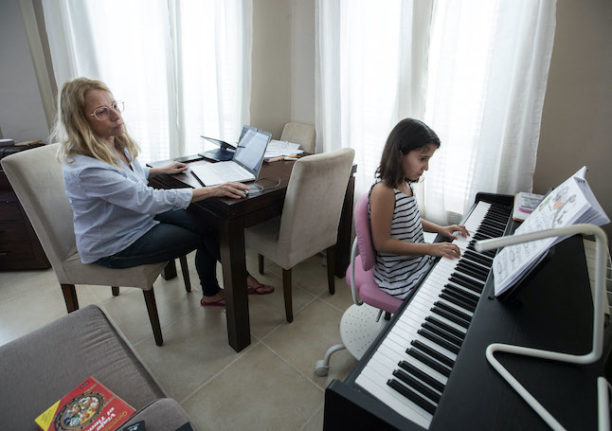The plan was announced on Monday November 21st by Spain’s Ministry of Economic Affairs, which said that the agreement “will preserve financial stability” in the face of the sharp rise in interest rates that have been applied by the European Central Bank since August.
The agreement still has to be brought before the Spanish Cabinet on Tuesday November 22nd, before its final approval.
The deal will help alleviate the effects that high interest rates are already having on variable mortgage bills.
For example, a person with a €150,000 mortgage at a variable rate to be paid over 30 years spent €448 in October last year, but the same mortgage this October (2022) was €675, which is 50 percent more.
Three in every four mortgages taken out in Spain are variable rather than fixed.
READ ALSO: Why mortgage payments in Spain could increase by up to €120 a month
What are the new measures and who will they help?
The agreement will help families who earn less than €25,200 per year. They will be able to benefit from an improvement to the Code of Good Practices, which the banks agreed with the former right-wing Rajoy government in 2012.
The code is currently limited to those with a maximum income of €24,318, but the new agreement aims to increase this.
Those who benefit from the improved code will:
- Be allowed to pay only the interest on their loan for five years.
- Will have the maximum interest on their loan limited.
- And will have the period in which to pay back the loan extended to 40 years.
If after these three measures are applied, families are still having to pay 50 percent of their household income to mortgage repayments, then they will be allowed to request a reduction from their bank. Keep in mind though, the bank can refuse this request.
Finally, if this is not enough or the bank refuses, families will receive a loan in order to help pay their mortgage bills to the bank.
Previously, families could only benefit from the Code of Good Practices if there had been a significant alteration in their financial situation in the past four years.
This meant that many people were not eligible because the problem had come from the increase in mortgage rates, rather than a change in their own financial situation.
The new measures will also reduce the maximum interest rate that households who benefit from the code will have to pay. Specifically, the maximum will be reduced from 0.25 percent plus the Euribor to -0.1 percent plus the Euribor.
Conditions for new homes will also be included but these will be less favourable. The time in which they have to repay the interest will be reduced to two years instead of five and they can extend the repayment period to a maximum of seven years.
READ ALSO: How to get a mortgage in Spain if you don’t have a job contract
What effect will this have on mortgage repayments?
Spain’s Ministry of Economic Affairs believes that a household with a mortgage of €120,000 and a monthly payment of €524, will now see their bill reduced during the five-year grace period by more than 50 percent down to €246.
What about mid-income earners who don’t qualify?
The measures will also introduce a new Code of Good Practices that focuses on the middle class. The objective is that these families will have “a more gradual adaptation” to the new interest rates.
This will be extended to those who earn up to €29,400. In addition, families who allocate more than 30 percent of their income to mortgage repayments will be able to benefit from it, although they will have to demonstrate that their mortgage burden has risen by at least 20 percent.
For these middle-class earners, the banks must offer a freeze on payment increases for 12 months, so they will continue to pay the same bill for one year.
Once that year has elapsed in which the instalments will not be able to rise, they will be offered a lower interest rate on those twelve months that have been frozen, which they must pay at the end of the loan period.
They will also have the possibility of extending the term of their mortgage by seven years.
Is there any other financial help for those struggling to pay their mortgages?
Yes, other new measures being introduced include expenses and commissions being reduced to facilitate the change from variable to fixed-rate mortgages.
READ ALSO: How to change from a variable to a fixed mortgage in Spain
Fees for early repayment and changing your mortgage from variable to fixed rate will also be eliminated during 2023.
The two Codes of Good Practices are expected to be available from January 1st 2023, and will be voluntarily adhered to by financial institutions. However, if the banks sign the agreements, they will be obliged to comply.
The first Code of Good Practices approved in 2012 was signed by almost all credit institutions in Spain.



 Please whitelist us to continue reading.
Please whitelist us to continue reading.
Member comments